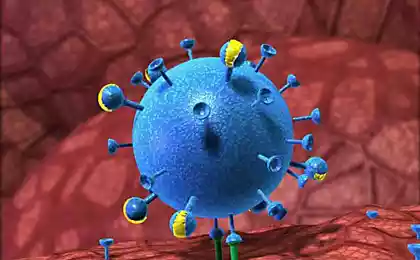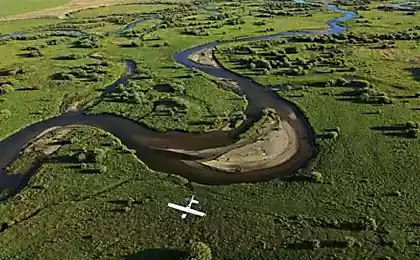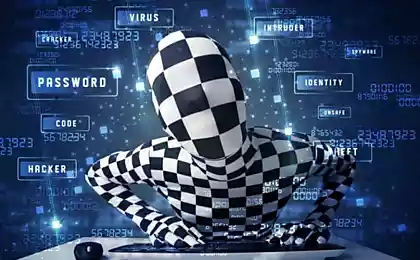1352
Ancient virus
French scientists had discovered a mysterious virus Pithovirus sibericum in the deeper layers of permafrost at a depth of 30 meters on the Kolyma in Russia.
The virus infects only single-celled organisms, and not unlike any known pathogen that can infect humans. However, the new discovery raises the possibility that global warming could lead to a revival of the ancient or eradication of the virus. This could include viruses and Neanderthals smallpox virus dormant in the ice for thousands of years.

Pithovirus sibericum belongs to the family of giant viruses, opened 10 years ago, and they are so large that they can be seen through a microscope. The size of the virus is 1, 5 micrometers in length (1 micrometer = 10-6 m), being the largest of the detected viruses.
The virus infects amoeba cells but not in animals and humans.
The causative agent belongs to a previously unknown family of viruses called Pithovirus, in which a third of the genes have something in common with other known organisms and only 11 percent with other viruses.

In this regard, there is a possibility that dormant and eradication of the virus in the Arctic can be reborn as the climate warms. However, not everyone believes that such viruses are potentially dangerous. As explained Sattl Curtis (Curtis Suttle) Maritime University virologist Briatnskoy Columbia in Canada, we inhale thousands of viruses every day and swallow billions when swimming in the sea.
"I would be much more worried about the hundreds of millions of people who will move due to sea level rise," - he explained.
The most dangerous viruses
1. HIV-3, 1 million deaths per year
2. Rotavirus -611 000 deaths per year
3. Hepatitis B - 521 deaths per year
4. Influenza viruses - 500 000 deaths per year
5. Hepatitis C - 500 000 deaths related to the virus, a year
6. Measles virus - 197 000 deaths per year
7. hantaviruses - 70,000 deaths per year
8. The rabies virus - 55 000 deaths per year
9. Yellow fever virus - 30,000 deaths per year
10. The virus of dengue fever - 25,000 deaths per year

Source: p-i-f.livejournal.com
The virus infects only single-celled organisms, and not unlike any known pathogen that can infect humans. However, the new discovery raises the possibility that global warming could lead to a revival of the ancient or eradication of the virus. This could include viruses and Neanderthals smallpox virus dormant in the ice for thousands of years.

Pithovirus sibericum belongs to the family of giant viruses, opened 10 years ago, and they are so large that they can be seen through a microscope. The size of the virus is 1, 5 micrometers in length (1 micrometer = 10-6 m), being the largest of the detected viruses.
The virus infects amoeba cells but not in animals and humans.
The causative agent belongs to a previously unknown family of viruses called Pithovirus, in which a third of the genes have something in common with other known organisms and only 11 percent with other viruses.

In this regard, there is a possibility that dormant and eradication of the virus in the Arctic can be reborn as the climate warms. However, not everyone believes that such viruses are potentially dangerous. As explained Sattl Curtis (Curtis Suttle) Maritime University virologist Briatnskoy Columbia in Canada, we inhale thousands of viruses every day and swallow billions when swimming in the sea.
"I would be much more worried about the hundreds of millions of people who will move due to sea level rise," - he explained.
The most dangerous viruses
1. HIV-3, 1 million deaths per year
2. Rotavirus -611 000 deaths per year
3. Hepatitis B - 521 deaths per year
4. Influenza viruses - 500 000 deaths per year
5. Hepatitis C - 500 000 deaths related to the virus, a year
6. Measles virus - 197 000 deaths per year
7. hantaviruses - 70,000 deaths per year
8. The rabies virus - 55 000 deaths per year
9. Yellow fever virus - 30,000 deaths per year
10. The virus of dengue fever - 25,000 deaths per year

Source: p-i-f.livejournal.com























